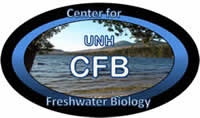Abstract
We aimed to develop a high-sensitivity method to detect microcystin toxins in fruit tissue and to determine if irrigation with water containing toxic cyanobacteria may result in accumulation of microcystin toxins in fruit tissue and affect fruit development. In a greenhouse experiment bush beans (Phaseolus vulgaris) and tomato plants (Solanum lycopersicum) were grown in the summer under natural light and temperature between the months of September and August. Mature plants received treatments of toxic, Microcystis aeruginosa, applied twice weekly to the soil. To simulate naturally contaminated irrigation water, the M. aeruginosa were applied to plants as a suspension of intact cells. After harvesting, fruiting bodies (beans and tomatoes) were homogenized and extracted with 80% methanol (MeOH) and analyzed by ELISA for microcystins. The first extraction method tested the extraction of 0.45 g fruit tissue in 1.5 mL MeOH, buffered with PBS after 24 hr and yielded MC concentrations just above detectable limits of the ELISA. The second extraction method concentrated samples using a SpeedVac and yielded MC concentrations in range of the ELISA. The third method filtered samples from Method 2 as a preliminary investigation into matrix effects and reduced MC concentration on an average of 84%. To determine if Microcystis affected the growth of the plant’s fruit, all harvested beans and tomatoes were individually measured, weighed and photographed before processing their tissue for ELISA. The presence of cyanobacteria stimulated bean growth (t-Test P<0.05), although there was no effect on the size or growth of tomatoes. Treated plants produced more fruit than the controls, although the difference was not statistically significant. The high - sensitivity method of MC extraction allows for detection of the cyanotoxins and microcystins, in the fruiting bodies of plants and an assessment of the health risk to humans and livestock.
Publication Date
1-1-2013
Publisher
UNH Center for Freshwater Biology Research
Document Type
Article
Recommended Citation
Lefebvre, Bethany R., "The accumulation of the cyanobacterial toxin, microcystin, in
cherry tomato (Solanum lycopersicum) and bush bean (Phaseolus vulgaris) plants" (2013). Center for Freshwater Biology. 1.
https://scholars.unh.edu/cfb/1

